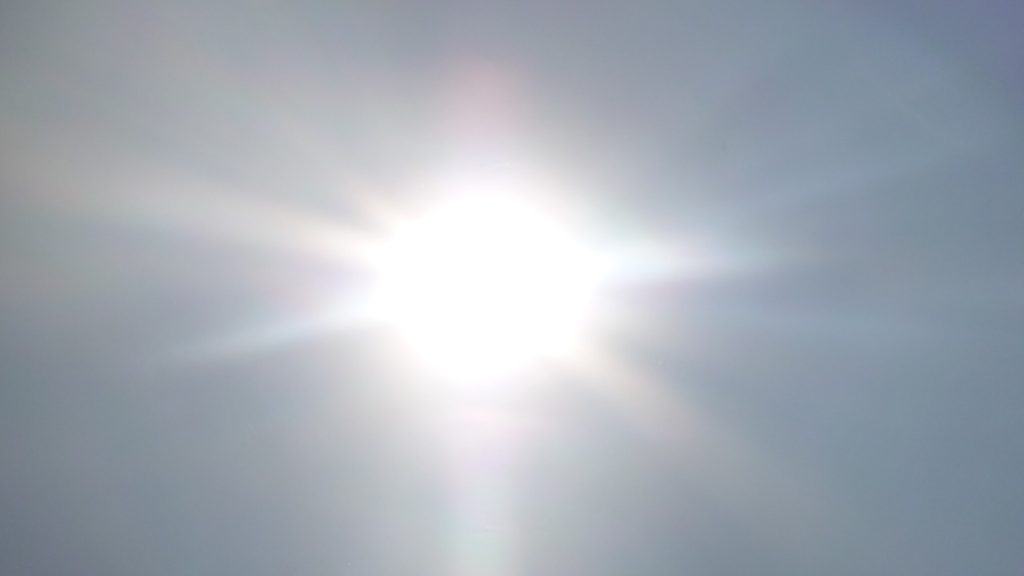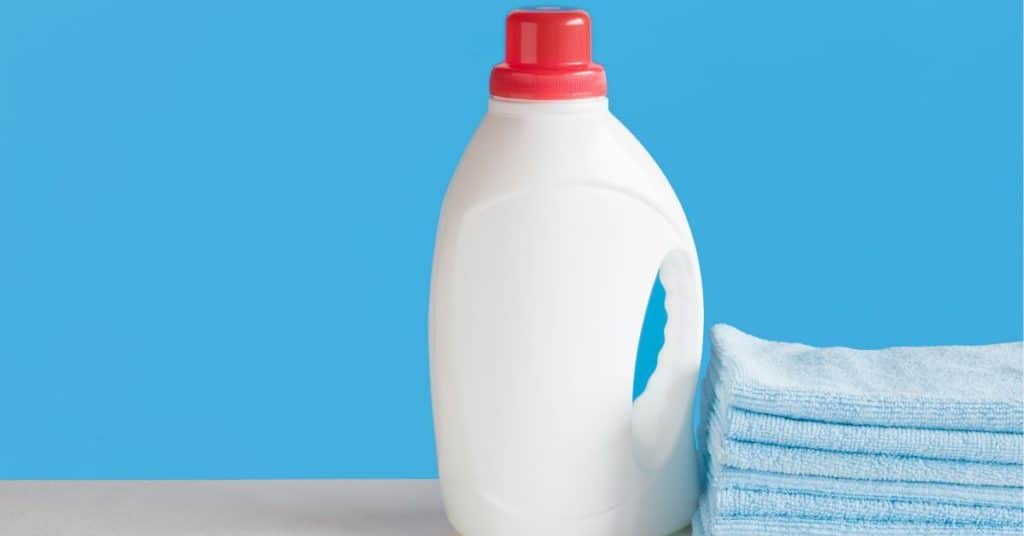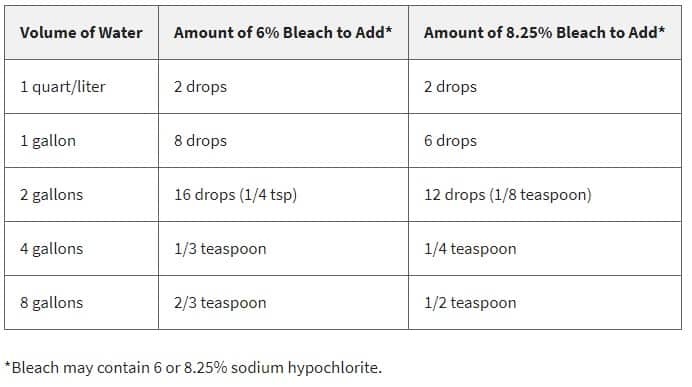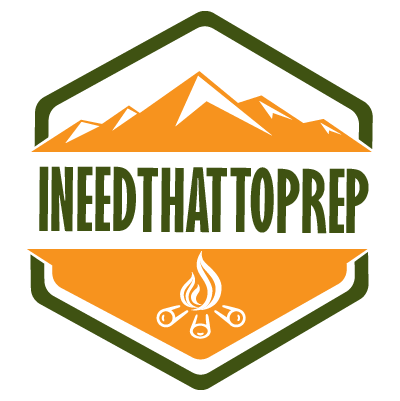Last Updated on November 28, 2019 by Lisa Vargas
If society goes array, you need to be prepared to leave at a moment’s notice. Whether its due to a natural disaster or some sort of societal collapse having clean drinking water is the number one most important item you will need to stay alive.
Today we will look at what are the best ways to purify water when you are away from home. We will look at that question and talk about some of the most important ways to purify water if you find yourself suddenly pushed out of your home. This post is about purifying water as opposed to filtering water. If you would like more information on different ways to filter water, please feel free to read our earlier post.
Most of these methods described below are for smaller quantities of water that you carry with you in a backpack, while hiking, or in a bug out bag. If you are stuck without water for more than a few days or have a larger family to accommodate, you can refer to another article we wrote called What Is The Best Way To Purify Water?
With that in mind, let’s go ahead and jump into the best ways to filter water when you are away from home.
How To Purify Water By Boiling it

This is the number one most reliable way to purify your water quickly. All you need to do is carry a little JetBoil with you at all times and a water bottle to collect water in and you’ll be good to go.
Having a small device such as the JetBoil allows you to keep it handy and easily accessible so that you can pull it out at anytime. You can read more about boiling water and its specifics here.
How To Use Ultraviolet Light To Purify Water

Ultraviolet light is one of the most effective ways to get rid of the bacteria in your water. Ultraviolet (UV) rays essentially annihilate the DNA of the pathogens in the water. It an extremely effect way to stop the microorganisms from reproducing in the water as well.
There are essentially two different devices on the market that you can use for your personal emergency preparedness kits. If you do a lot of hiking or backpacking, there are some commercial UV water sterilizer pens on the market you can buy to put in your hiking backpack or a bug out bag.
You simply fill up your water bottle or container with water from the lake or stream, and stick the UV pen into the container and hold it there for about 45 seconds and then the water should be ready to drink. These UV pens run on batteries, so it’s very easy to keep them going for the long term because you simply have to replace the batteries.
The other option are hand cranked UV water purifiers that use short wave germicidal UV light to purify the water. One of the more popular models that campers use is the Steripen Sidewinder Water Purifier. With these types of purifiers, they run through manual hand cranks instead of batteries.
You need to be careful with UV light purifying methods because if the water source is really cloudy, it allows the bacteria and viruses to hide from the UV light and you won’t get the water 99% cleaned. It’s best to take water from clear lakes and streams when using the UV pens and hand cranks so you know you’re getting the most out of this method.
Chemical Purification

Chemically treating the water that you are about to drink can also be done fairly easily. This is the method that I used when I took a trip last year to Peru. I had heard the water was not safe to drink in Cusco, so I choose to purchase these Potable Aqua purifying tablets to put into my water that I got out of the sink in my hotel room. But there are a few other ways that you can chemically treat your water if you don’t have access to heat or UV pens.
Bleach
In an emergency situation the EPA recommends that you use common household bleach to purify your water. You need to make sure that it’s unscented, and states on the label that it is safe for purifying water. The active ingredient that is used to safely clean the water is sodium hypochlorite (NaOCl).
This article by Chlorine Chemistry calls sodium sodium hypochlorite the “Public Health Champion” because the chemical has done so much for the public to make our water safe. Since this article is about being away from home, you may want to have some bleach in your bug out vehicle at all times for emergency back up.
Knowing how much bleach to put into your water is important to making sure you don’t over due it and make yourself sick. The image below is from the EPA website that shows the correct amounts of bleach you need for the amount of water you will be drinking.

Using the above measurements, you can add the bleach to the water using a clean dropper, which typically works best for small amounts. It is recommended that the bleach you use to purify your water is less than a year old as well because it goes bad. This is the reason many preppers like to use “pool shock” instead. You can ready more about how to purify your water using calcium hypochlorite (pool shock) here. You can’t drink the water immediately after adding the bleach.
You need to check and see that the water has a slight chlorine smell and then let the water stand for at least 30 minutes. If it doesn’t, you can repeat the dosage and let it stand for another 15 minutes before consuming.
Iodine
One of the first things to note is according to an OA water purification guide written by Princeton University, water purified using iodine is not recommended for pregnant women, women over 50, people with thyroid problems, or people who may have some sort of sensitivity to iodine. You should always ask your physician before using iodine to treat water.
On top of that, there few other things that you should know before using this method to purify your water. Iodine is a halogin and all halogins are toxic. There are many other things that are important to know about iodine before you use it.
One of the most interesting and unique blog posts about iodine and water purification was from Purinize. In their post “What You Should Know About Iodine For Water Purification,” there are many facts that they bring to light that I recommend you read before using iodine. With that said, let’s look at the two ways you can use iodine to purify water.
Iodine Tablets
Iodine tablets are probably one of the easier ways to make sure that your water is safe to drink. All you need to do is drop a few tablets into a quart of water, then close the lid loosely, then wait about five minutes. After the five minutes you are going to shake your water bottle vigorously and then close the lid of your water container as tight as possible and let stand for 30-35 minutes. After that, it should be safe to drink.
Liquid Iodine
Purifying water with liquid iodine is similar to above, you just need a few little extra items. The same steps apply, but instead of iodine tablets you are going to need an iodine tincture solutions that is 2% iodine and about 47% alcohol. You can find these little 2 oz. bottles at your local grocery store or you can get one on Amazon right here as well.
You will also need an eye dropper of some sort to extract the iodine from the bottle and place in your water bottle.Once you have your iodine tincture solution, you simply take your water bottle and fill it up with water. Be sure to make sure the water is as clear as possible. Cloudy water makes it very easy for protozoa to hide behind the dirt and grime in the water.
If you have “floaties” in the water, you can try and strain those out first using a handkerchief or a cloth. Once the water is as clear as you can get it, add 5-10 drops of iodine for every 32 fl. oz. If the water is cloudier, you will want to add closer to 10 drops. If you are gathering water from a still body of water, as opposed to a flowing stream, you will want to add closer to 10 drops as well.
Distilling Water
Distilled water is water that has been boiled into vapor and then condensed back to into liquid in a separate container. Distilling water will remove heavy metals, salts, and most chemicals and can remove more contaminants than most carbon filters.
There are several methods that you can use to distill water, but I want to focus on methods that are most useful if we find ourselves in a survival situation. Most likely you won’t have electricity in a grid down scenario so you can use a vegetation bag, transpiration bag, or below ground solar still set up as described here.
Solar Disinfection (SODIS)
Solar disinfection, called SODIS, was developed in the 1980s to disinfect water used for oral rehyrdation. This method has primarily been used to help developing countries gain access to clean drinking water at no cost to them. It has been proven effective in reducing viruses, bacteria, and protozoa in the water.
SODIS uses the suns ultraviolet rays to kill the pathogens in the water. All you need to do is fill plastic water bottles with water and set them in direct sunlight for about 6 hours and viola!
Make sure you don’t use glass bottles. Use plastic bottles that have the #1 label on the bottom. Try and use the clearest water that you can. If the water is really dirty, you need to filter it first to get rid of the dirt and floaties first.
Gravity Water Filters
For more of an outdoor environment, the next method works well. Self-made gravity water filters can take some up a little bit more room but are still popular among backpackers and hikers.
The filter will be small but the water storage bag above will be larger, and then you’ll need another one below the filter to collect the water when it’s finished being filtered. LifeStraw makes a nice bag you can use as the top reservoir bag and comes with their signature LifeStraw filter attached at the bottom.
Final Thoughts
Any of the methods described above will work great when you are away from home. Clean drinking water will not only save your life when you’re forced out on the road, but it will give you peace of mind that you’ll never die of dehydration out in the wilderness.
Make sure to check out the other articles on water purification and filtering in our food and water section of the website.
